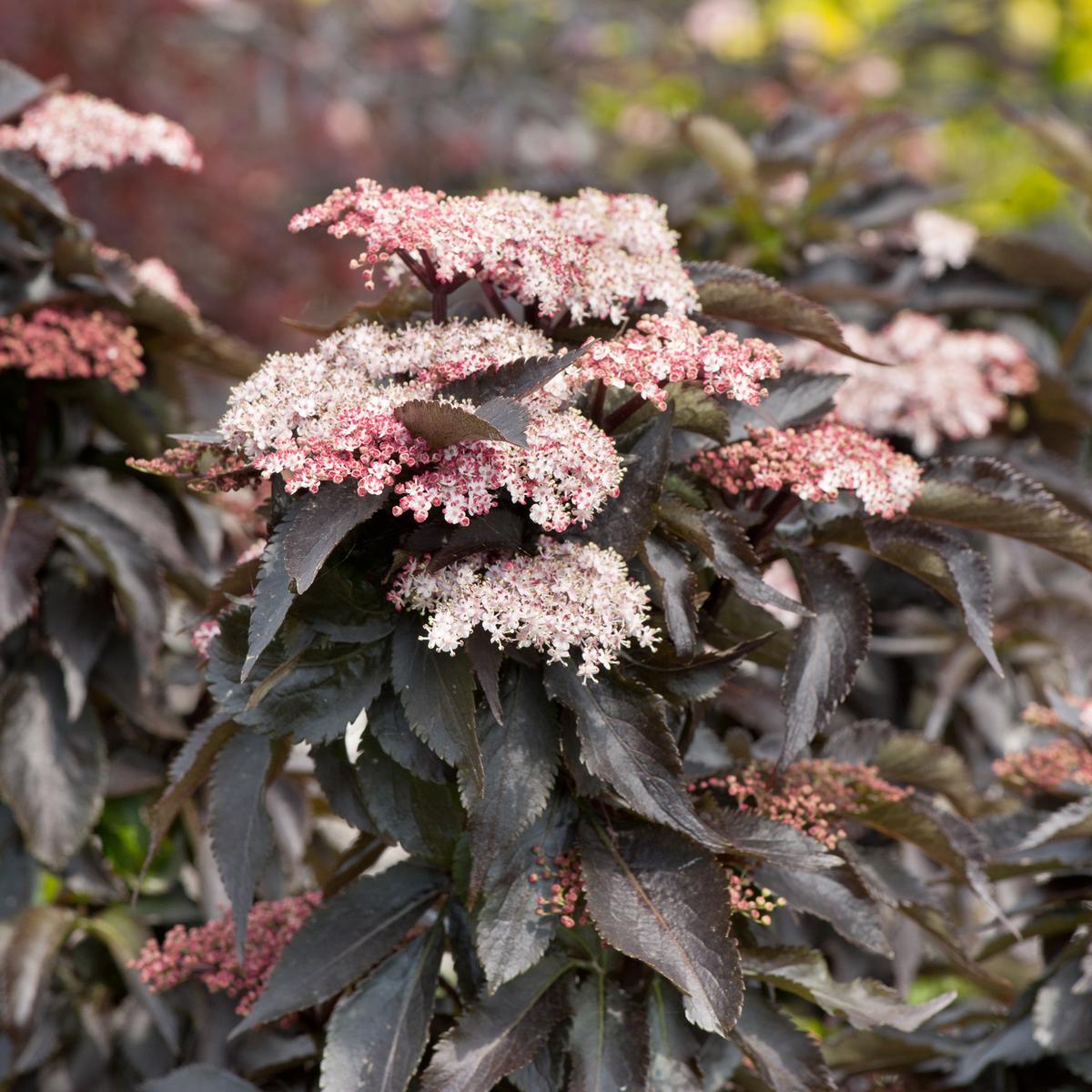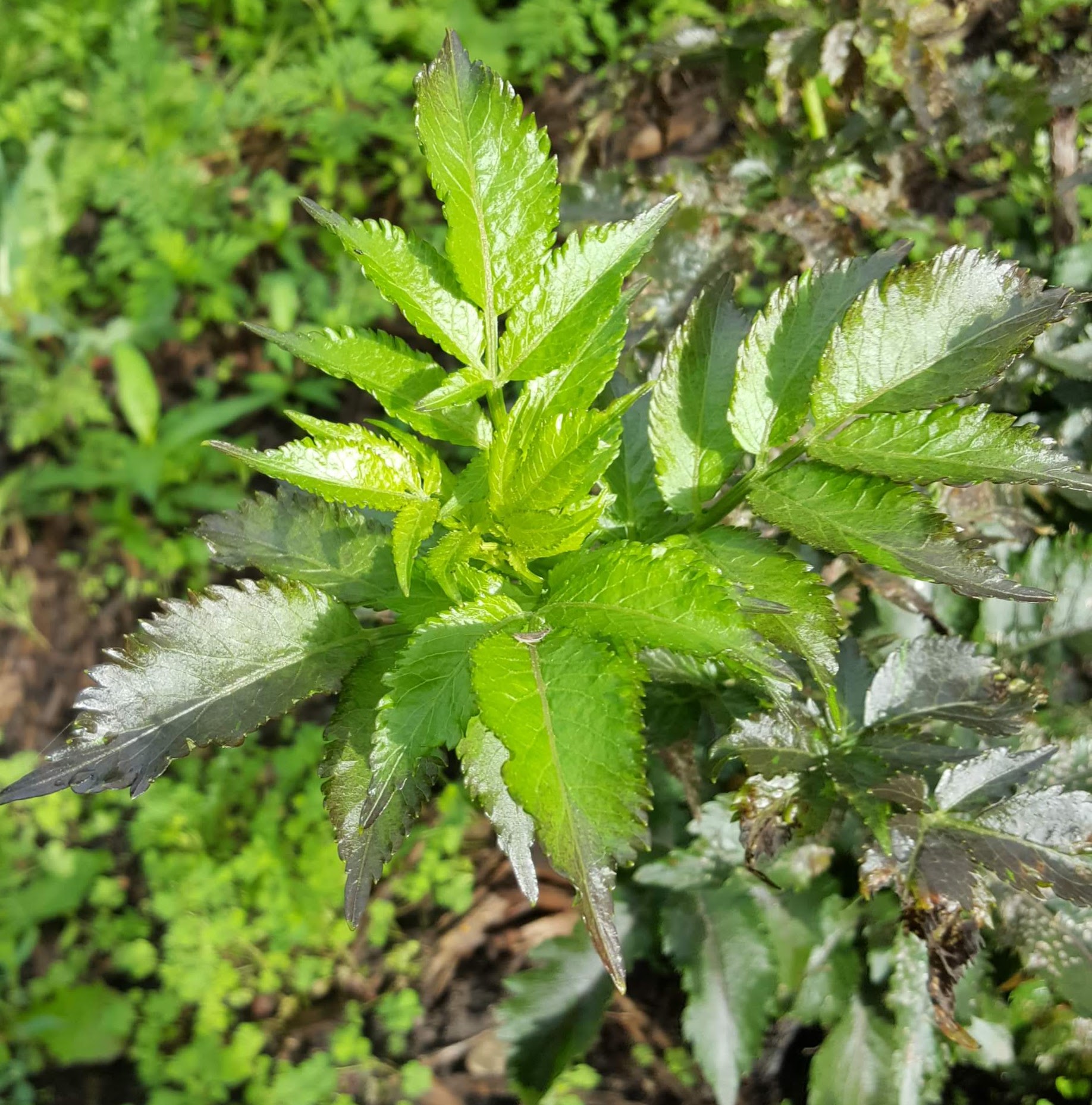Common Name: Black Tower elderberry
Scientific Name:
Family: Adoxaceae
Genus: Sambucus
Species: nigra 'Eiffel 1'
Hardiness Zone: 5 to 8
Height: 6 to 8 ft
Width: 3 to 4 ft
Common Characteristics:
Black Tower Elderberry, also known as European elder, is a deciduous, multi-stemmed shrub and occasionally a small tree. The tan-colored stems have raised lenticels. The inner pith of the shrub is white and fills the stem. The older bark on it develops ridges. The leaves are in an opposite arrangement and are pinnately compound. There are roughly 5-11 leaflets and they are dark green in the summer and in the fall become a bright yellow. Many cultivars that are popular in landscaping have purple foliage in the summer. When the leaves are crushed, they give off an unpleasant aroma. Small white flowers bloom in the summer as a large flat-topped cyme and give off a musky fragrance. The flowers give way to black-purple berries in the late summer.
Where it Grows:
Elderberry grows in well-drained, medium to wet soil with full sun to part shade. Although it tolerates a wide range of soils, it prefers moist, humusy ones. It can form aggressive colonies through root suckers if not maintained properly. There are many ways to do late winter pruning: removing dead or weak stems, shortening one-year stems, or cutting to the ground for rejuvenation. Unmanaged elderberries can become weedy in appearance. It is tolerant of road salt, occasional drought, and occasional flooding.
How it's Used:
This shrub can be used in hedges, rain gardens, and as a specimen plant. The berries can be used for wine, jellies, jams, pie fillings, and syrups. It is less sweet than American Elderberry.
Ecosystem Services:
Insect pollinators such as butterflies are attracted to the flowers. The berries provide a food source for birds.
Where it is Native to:
Black Tower Elderberry is native to Europe, southwestern Asia, and northern Africa.
Known Varieties and Their Traits:
-
Black Beauty™ elderberry (Sambucus nigra ‘Gerda’): This variety has dark purple leaves, pink flowers, black clusters of fruit, and grows 6 to 8 feet high and wide.
-
Black Lace™ elderberry (Sambucus nigra ‘Eva’): This shrub has lacy, fern-textured, dark purple foliage with large 6-inch diameter clusters of pale pink flowers. It grows 6 to 8 feet high and requires full sun to maintain the purple color.
-
Cutleaf elderberry (Sambucus nigra ‘Laciniata’): This variety has finely dissected green leaves, clusters of white flowers, and grows 6 to 8 feet high and wide.
-
Instant Karma™ elderberry (Sambucus nigra ‘Sanivalk’): This variegated elderberry has blue-green leaves and creamy white margins. The plant flowers white and grows 6 to 8 feet high and wide.
-
Lemony Lace™ European red elder (Sambucus racemosa ‘SMNSRD4’): This is a bright golden, cut-leaf elderberry with good sunburn resistance. It reaches 3 to 5 feet high and wide. New growth starts out reddish, but changes to lemony yellow with white flowers and red fruit.
Problems:
Plants can spread somewhat aggressively in optimum conditions. There is some susceptibility to canker, powdery mildew, leaf spot, borers, spider mites, and aphids. The branches are susceptible to damage from high winds or from heavy snow/ice in winter.
References:

